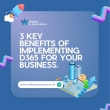You’re maneuvering a business landscape where AI advancements are rapidly changing the rules. To stay ahead, fostering a culture of learning amid AI growth is essential. You need to align your learning initiatives with strategic business goals, ensuring that ongoing skill development is both relevant and effective. By providing flexible learning options like online courses and mentorship programs, you empower your team to adapt to new AI technologies. But how do you make learning a central part of your organization’s DNA? And what role does leadership play in driving this culture? The answers may surprise you.
Key Takeaways
- Align Learning with Business Goals: Integrate tailored learning processes with clear, measurable outcomes to maintain strategic alignment with business objectives.
- Provide Flexible Learning Options: Offer online courses, mentorship programs, and microlearning modules to cater to diverse employee needs and preferences.
- Foster a Learning Community: Use peer mentoring, collaboration tools, and AI-enhanced learning to create a collaborative and supportive learning environment.
- Recognize and Reward Learning: Use learning incentives, peer recognition, and AI tools to provide personalized feedback and targeted support to encourage continuous development.
- Lead by Example and Feedback: Demonstrate a commitment to ongoing learning through leadership role modeling, open communication, and recognition of learning efforts to foster a culture of continuous improvement.
Align Learning With Business Goals
How can you guarantee that continuous learning in AI truly aligns with your business goals? The answer lies in strategic alignment and measurable outcomes. As AI technologies rapidly evolve, it’s vital to confirm that continuous learning strategies are synchronized with your business objectives.
This involves integrating learning processes that are tailored to meet specific business needs, allowing for adaptable AI models that can respond to changing market conditions and customer expectations. By leveraging tailored IT solutions, organizations can create a robust framework for continuous learning that’s closely tied to their strategic goals.
To achieve this alignment, you need to define clear, measurable outcomes that are aligned with your business goals. This could involve setting specific performance metrics for AI models, such as accuracy rates or decision-making speed. By doing so, you can track the effectiveness of continuous learning strategies and make necessary adjustments to confirm they’re delivering the desired outcomes.
Continuous learning in AI should be viewed as an ongoing process, not a one-time event. Regular evaluations and updates are essential to maintain strategic alignment and achieve measurable outcomes.
Encourage Continuous Skill Development
As you integrate AI into your business operations, encouraging continuous skill development becomes essential for maintaining a competitive edge and aligning with evolving business goals. This involves fostering a culture where employees are continuously learning and updating their skills to stay relevant in a rapidly changing landscape.
Leveraging tools like data visualization tools can enhance the learning experience by providing clear insights into performance data and trends.
One effective way to achieve this is through microlearning techniques, which involve breaking down learning into bite-sized chunks that can be easily absorbed during busy workdays. This approach is particularly beneficial for employees who need to quickly adapt to new technologies and methodologies without taking extensive time off for training.
Peer mentoring is another powerful tool for promoting continuous skill development. By pairing employees with experienced peers who can provide guidance and feedback, you can create a supportive learning environment that encourages growth and development.
This not only helps employees stay up-to-date with the latest AI advancements but also fosters a culture of collaboration and knowledge sharing that can lead to innovative solutions and improved productivity.
Regularly evaluating and updating learning strategies guarantees that they remain aligned with your business objectives and the evolving needs of your workforce.
Provide Flexible Learning Options
Providing flexible learning options is vital as you integrate AI into your operations. With AI’s rapid advancement, continuous skill development is fundamental, and flexible learning options cater to diverse learning needs and preferences. You can offer a range of platforms, including online courses, mentorship programs, and microlearning modules.
Mobile learning also plays a significant role, providing learners with the flexibility to access educational materials anywhere and at any time.
As AI transforms the educational landscape, there’s a growing emphasis on collaborative projects and personalized pathways. These approaches not only foster teamwork and community building but also allow learners to tailor their educational experiences to their unique needs and interests.
For instance, AI can help design personalized learning plans by analyzing learners’ strengths, weaknesses, and learning styles. This personalized approach enhances engagement and guarantees that learners are well-equipped to navigate the rapidly evolving job market.
Foster a Learning Community
By cultivating flexible learning options, you lay the groundwork for fostering a learning community that thrives on ongoing skill development and adaptation to new technologies. This involves leveraging peer mentoring and knowledge sharing to create a collaborative environment where learners can support each other in maneuvering through AI-driven changes.
The use of collaboration tools such as learning networks, community workshops, resource libraries, and discussion forums becomes vital in facilitating this exchange.
Incorporating AI into these platforms can greatly enhance the learning experience. For example, AI can help in personalizing educational content and providing real-time feedback, making learning more efficient.
Additionally, AI-powered virtual tutors can offer round-the-clock support, ensuring that learners have continuous access to guidance and resources.
To effectively foster a learning community, it’s essential to facilitate skill exchanges where learners can share experiences and insights about AI tools and technologies. This not only promotes a deeper understanding of AI but also encourages a culture of continuous learning and adaptation, equipping learners with the skills necessary to thrive in an AI-dominated educational landscape.
Recognize and Reward Learning
Recognizing and rewarding learning is essential in fostering a culture of continuous development within an AI-driven educational landscape. You need to create an environment where learners feel motivated and valued for their efforts.
Effective strategies include implementing learning incentives, such as achievement badges or gamified learning, to encourage engagement and progress. Peer recognition and mentorship programs also play a significant role in acknowledging learners’ achievements and guiding their growth.
Skill showcases provide a platform for learners to demonstrate their abilities and receive feedback, which is important for continuous improvement. In addition, knowledge sharing and learning pathways help learners visualize their progress and stay motivated.
Incorporating AI-driven tools can further enhance these strategies by providing personalized feedback and recommendations. For instance, AI can help identify areas where learners excel and need improvement, enabling targeted support and recognition.
Integrate Learning Into Performance
As you focus on recognizing and rewarding learning, it’s equally important to guarantee that learning is integrated into performance metrics and processes. This step is essential for fostering a culture of continuous learning that aligns with your organization’s goals.
By integrating learning into performance, you create a direct link between employee development and business objectives, enhancing employee engagement and productivity.
To achieve this, consider implementing various strategies. Develop learning pathways that are tailored to individual needs and roles, and incorporate mentorship programs that facilitate knowledge sharing.
Leverage digital resources and feedback loops to secure continuous skill development and assessment. Use training assessments to identify skill gaps and deploy targeted interventions.
Additionally, implement skill mapping to align training initiatives with specific organizational needs.
Lead by Example and Feedback
When it comes to fostering a culture of continuous learning, leadership plays an essential role in setting the tone. You must lead by example through your own commitment to ongoing learning and by providing constructive feedback.
As a leader, you’re a role model, and your team will follow your lead if they see you prioritizing continuous learning. This means actively seeking out new skills and knowledge, addressing your weaknesses, and being open to constructive criticism.
Providing constructive feedback is equally important. AI tools can enhance feedback processes by offering data-driven insights and personalized recommendations.
However, it’s your responsibility as a leader to use these tools judiciously and ethically. Make certain that feedback is balanced, specific, and actionable. This will foster a culture of continuous improvement, where team members feel valued and motivated to learn and grow.
























